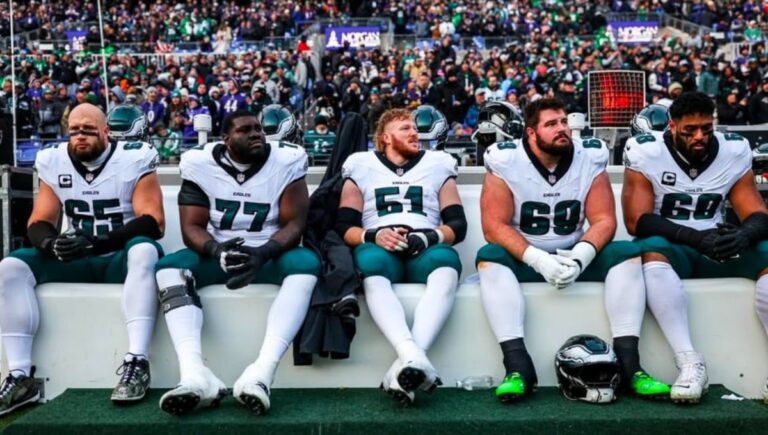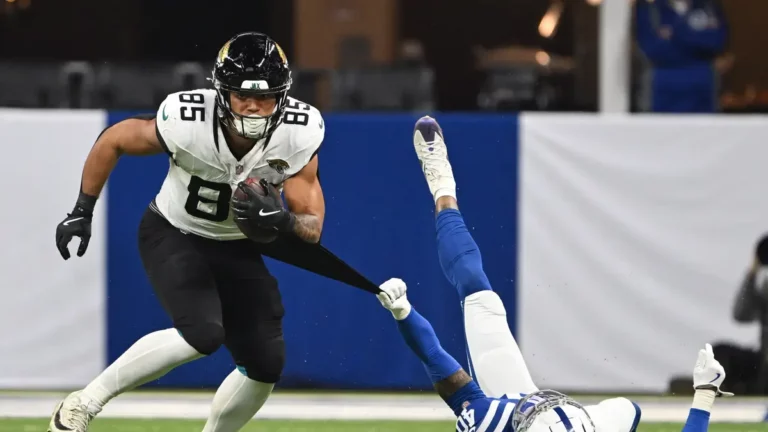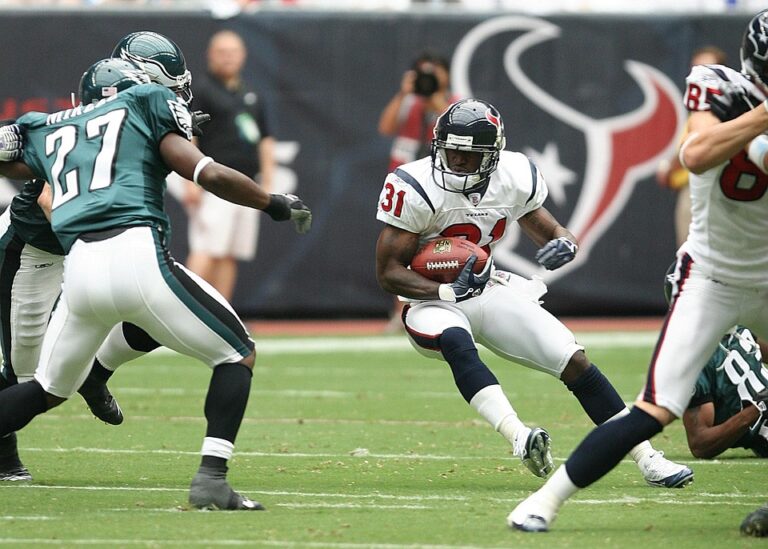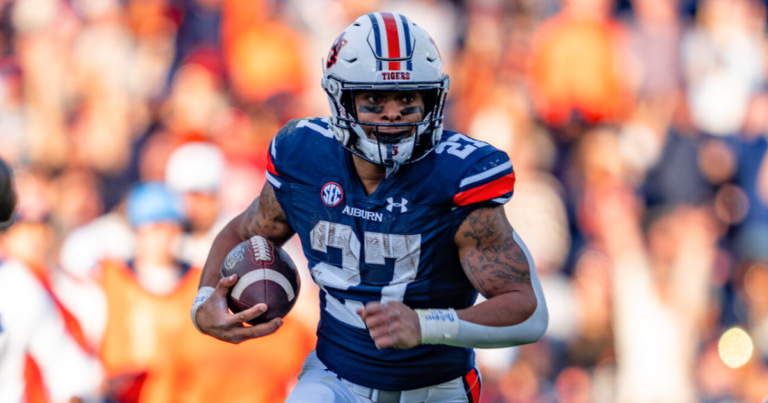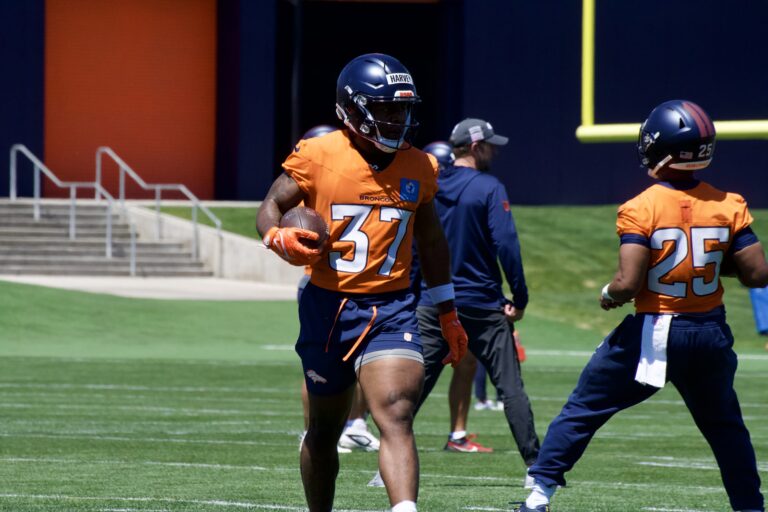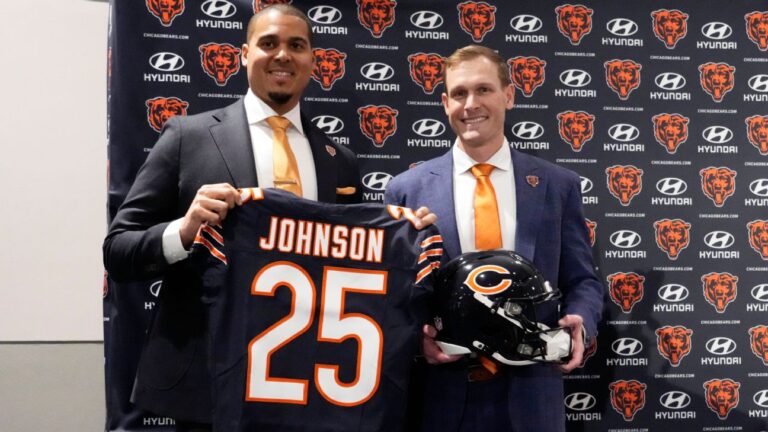If you haven’t read parts 1 and 2 of this series, please click the links below. Part 1 includes an overview of my fantasy football auction draft philosophy along with instructions for downloading and setting up the Ultimate Auction Draft Pricing Tool. Part 2 will teach you how to analyze the data from the tool and form an initial draft plan position-by-position.
Part 1: How To Dominate a Fantasy Football Auction Draft – Setting Player Prices
Part 2: How To Dominate a Fantasy Football Auction Draft – Developing a Game Plan
Part 4: How To Dominate a Fantasy Football Auction Draft – In-Draft Strategy & Tips
You’re almost there! You’ve gathered all the data, generated custom dollar values for every player, and synthesized the information into an initial draft plan, with strategies for each position. You’re almost ready to dominate your fantasy football auction draft.
But first, you must complete the final phase of pre-draft preparation: building a comprehensive, flexible draft budget.
Our overall philosophy: stick to your positional budgets, but keep in mind the players and tiers you’d accept within the $ amount you’ve set. You have your playbook, but prepare those audibles to adjust on the fly.
Reminder: all the following screenshots and analyses are based on a 10-team ESPN half-PPR league. Your league might be different, so the goal of this series is to teach you how to analyze any set of data and come up with conclusions. Read part 1 to download the spreadsheet and learn how to customize the tool to your league settings.
Based on my analysis in part 2, my initial plan is to draft two high-end running backs, George Kittle or Darren Waller at tight end, three mid-tier wide receivers (with one higher-end guy if possible), and a quarterback after that. The Wolf approves this method, although he also recommends considering THREE high-end RBs and filling in the blanks, given the depth at the other spots.
Regardless, here’s the sample starting lineup I came up with:
QB: Jalen Hurts $2
RB: Christian McCaffrey $67
RB: Joe Mixon $33
WR: Calvin Ridley $34
WR: Tyler Lockett $13
Flex: Tee Higgins $7
TE: George Kittle $23
Total: $179
LINEUP-LEVEL BUDGETING: STARTERS VS. BENCH
If I have a $200 budget, I like to budget around $180 for my starting lineup. This is more of a personal preference, but I have found by experience that $180 strikes a good balance between buying the best starting lineup I can afford while saving enough money to target my favorite sleepers late in the draft.
Beyond planning to spend the remaining $20 on the bench, I don’t like to specifically budget for my bench before the draft. Depending on how my starting lineup shakes out, I could end up with anywhere between $10 and $25 to fill out the bench, which would result in drastically different bench strategies. Also, bench needs are different depending on your starting lineup. I like to make a list of cheap players to target late in the draft and grab as many as possible with the money I have left.
Wolf’s Take: On 16 man rosters (10 starters, 6 bench), I typically only reserve $10 for my bench, at most. I blow it all on starters, as each draft typically becomes a “snake” at some point. While commanding the later stages of the auction is nice, I am 100% “stars and scrubs,” with about $180 reserved to just my WRs and RBs.
POSITIONAL BUDGETING VIA THE ULTIMATE AUCTION TOOL
Since we already have a sample lineup, building our initial budget for each position is very easy. I can simply add up the cost of each position. As discussed in part 2, I assume a wide receiver will be drafted to start in the flex position, although The Wolf recommends three stallions if possible.
For my construction, our initial budget looks like this:
QB: $2
RB: $100
WR: $54
TE: $23
Total: $179
To make this easier to visualize, check out the Build Teams sheet. Select the positions your league starts in column B, and column C will automatically populate the list of players eligible to start at each position. Be sure to click the “Update Player Dropdowns” button after making changes to column B to refresh the dropdown lists in column C.

This tool allows you to put together any combination of players into your starting lineup and track key metrics. I like to focus on the total Real Value of my starting lineup in column E because it is easy to understand. “Real Value” is a player’s true worth based on your league settings. If an average manager in your league spent $180 on their starting lineup without reading this series, their lineup would have an average real value of around $180. Our sample lineup has a real value of over $226!
BUDGETING FOR ALTERNATE SCENARIOS
While our first budget is a useful starting point, the flexibility we have at each position is unclear. We know we won’t leave the draft with these seven players for these exact prices. Drafts are unpredictable. Plans change.

The main risk we need to plan for is all our top running back targets selling for significantly above their AAV, which does happen in some leagues. If our chosen QB, TE, or WRs sell for significantly more than their AAV, we can easily replace them with a player of similar value. However, at running back, we see a significant drop-off in real value after RB4 (Alvin Kamara). Due to the lack of alternatives, our budget needs to change if the top backs sell significantly above their AAV.
We need to test how flexible our budget is in other areas to determine the maximum amount we can spend on the running back position. The top backs will be nominated early in the draft, so our decisions at running back will affect the entire draft.
Still: hold true to your original budgeting philosophy. If you went in planning to spend on RBs (like you should), don’t suddenly switch up because prices are higher than expected.
Adjust accordingly, by mapping out audibles ahead of time, to help you adjust in real-time like the below examples.
For simplicity, I will assume that we are going to keep the same quarterback, tight end, and $180 starting lineup budget in each alternate scenario. We have plenty of QB streaming options, and Darren Waller is a great backup option for our TE.
Given these assumptions, we have $155 to allocate between running back and wide receiver. We normally would plan to spend $100 on the combination of Christian McCaffrey and Joe Mixon, But because we are planning for a scenario where our running back targets sell for more than expected, I assume McCaffrey will go for $15 above his AAV, and Mixon will go $5 above his AAV. Each player is still worth buying at the new price, but we now have to spend $120 to get both.
AUDIBLE EXAMPLE 1
First, we will allocate an extra $20 to running back to keep the now more expensive players and decrease the wide receiver budget from $55 to $35. If $35 is the minimum you are willing to spend on your three receivers, your max running back budget is $120. If not, you can experiment by plugging in players with different values until you find your breaking point. For $35, I can get Cooper Kupp, Tyler Lockett, and Tee Higgins.

AUDIBLE EXAMPLE 2
We want to determine our maximum running back budget, so let’s now assume each top-5 back only sells for $5 above their AAV. Should we still get two top backs? Let’s see what we can do with a $45 receiver budget. For $45, I can get Amari Cooper, Tyler Lockett, and Cooper Kupp.

AUDIBLE EXAMPLE 3
Given the original assumptions of a $15 price increase for McCaffrey and a $5 price increase for Mixon, if we want to increase the receiver budget from scenario 1, we must downgrade at running back. Aaron Jones stands out as a good value replacement for McCaffrey given the data, and making the change gives us $73 to beef up the wide receiver position. For $73, I can get Calvin Ridley, Tyler Lockett, and Keenan Allen. We did go one dollar over the starter budget here, but that’s okay.

AUDIBLE ANALYSIS
Setting Maximum Running Back Budget
As you can see in all three audibles, we stuck to our guns from our initial gameplan and remained RB Heavy in expenditure.
Still, like the best NFL teams, we found productive ways to audible, and take what our “opponents” were giving us and use it to our advantage.
All three scenarios still fill our running back and wide receiver starters with top-60 players, the range where most league-winners come from. If you are getting players you like for nice values, any scenario is ideal. Rather than blindly maximizing real value, try to find lineups filled with your favorite players that also have favorable prices. Setting maximum budgets is as much an art as a science.
Another benefit of audibling: you might discover tweaks to the initial game plan and budget. For example, I prefer scenario 3 over scenario 1, so I know my maximum RB budget is less than $120. The wide receivers from Scenario 1 are pretty weak for a 10-team league. Scenario 2 still looks appealing even though I had to pay $110 for both backs. I could test more scenarios, but $45 to spend at WR feels very close to my minimum number, so I will set my maximum running back budget at $110.
NEXT STEPS
My budget is now much more actionable. If I win McCaffrey for $72 in the real draft, I know I don’t want to spend more than $38 on my second back to stay within the $110 limit. I can comfortably avoid overspending on my second running back now that I have a specific number in mind.
I encourage you to formulate your draft strategy, identify the threats, and use the tool to build contingency plans. Every draft strategy is different and comes with unique risks, and the tool can help create audibles and backup plans for any scenario. With proper planning, nothing will stop you from dominating your draft!
Congratulations, you are now a master of auction pre-draft preparation! You went from inputting some basic ADP data and league settings in part 1 to learn how to plan for threats and develop flexible budgeting strategies. You should be proud. Stay alert for part 4, the final part of the series, where I reveal my best in-draft tips.
Our Auction Series is all you need to dominate your 2021 Fantasy Football Auctions. Don’t miss a single part:
- Part 1: Customizing Player Prices
- Part 2: Initial Game Plan and Budget by Position
- Part 3: Map out Audibles
- Part 4: In-game domination





















